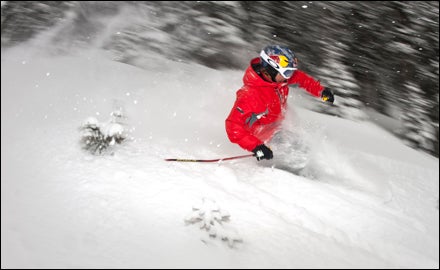THE SPORT ONCE known as “the Chinese downhill”four racers simultaneously attacking jumps, banked turns, and tabletops in a full-contact race to the finishis suddenly in the Olympics. The U.S. team consists of Daron Rahlves, 36, and Casey Puckett, 37, two former World Cup downhillers with seven Olympics and no medals between them. They won’t be alone. Many ski-cross entrants in Vancouver will be World Cup veterans looking for the medal that eluded them. That makes you wonder whether ski-cross is an exciting new event designed to spice up the stodgy Olympics with some X Games verve or a consolation prize for racing’s elder statesmen.
“A lot of retiring racers want nothing to do with it,” says U.S. Ski Cross coach Tyler Shepherd, who had four Olympic berths to fill, but only Rahlves and Puckett could even finish heats in international competition.
That’s because, in addition to being seen as less worthy than racing against the clock, ski-cross is also considerably more dangerous. Heats are often decided by who’s left standing after demolition-derby-style pileups. But if the risks make ski-cross a gladiatorial spectacle, they’re also its athletic redemption. Ski-cross is to downhill what ultimate fighting is to boxing: It may not require the precision, but few would argue that it isn’t a more exciting contest. In Vancouver, no matter who claims the gold, it’ll be the rebirth of a former racer who clawed his way back to put it all on the line just one more time. And who doesn’t love an Olympic comeback?


